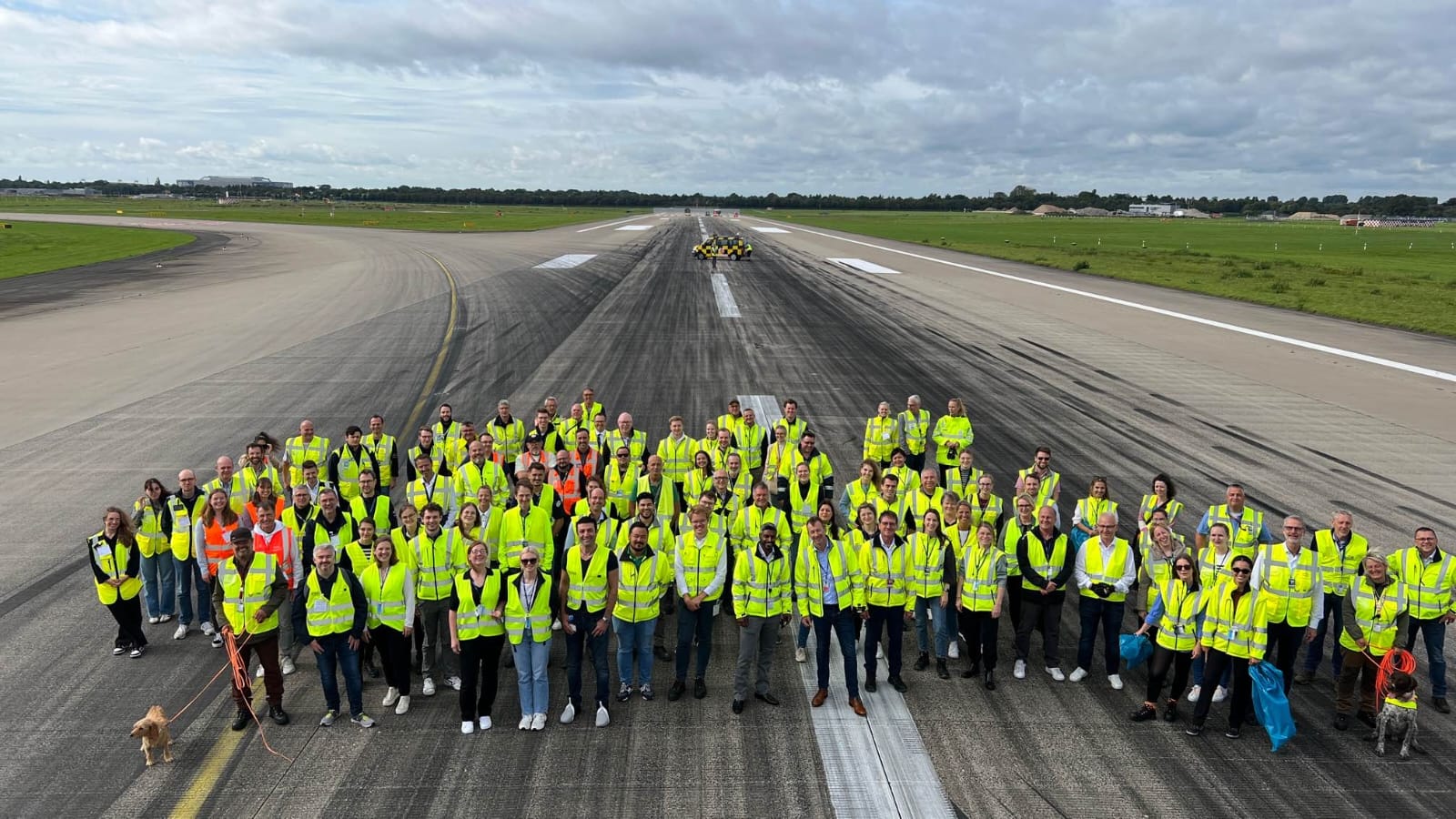When a famous golfer like Rory McIlroy or Jon Rahm is teeing up a putt, they are not just lining up the shot but they are also checking for any FOD that might stand between their ball and perhaps the glory of winning the open championship. In aviation, FOD can be even more important because history has shown that it can lead to accidents that cost lives.
As the EASA Safety Promotion Team joins the team at Dusseldorf Airport for their FOD Walk, this provides a great opportunity to talk about this important topic, review some key definitions and consider what a good FOD control programme looks like.

First, lets get the confusion about the definitions out of the way
When we talk about FOD, there is an immediate confusion. Let’s discuss that right now to avoid any problems in the rest of the article. When we use the word “FOD”, this refers specifically to “foreign object debris”, which can cause FOD damage. “FOD” does not mean “foreign object damage”.
FOD is any inanimate object which has the potential to be a hazard to aircraft operation. It can be items around the aerodrome, in the cockpit or in other parts of the aircraft that might have been introduced during aircraft maintenance activity.
Key rules on FOD
The main regulatory reference to FOD is in the Aerodrome Rules (Regulation (EU) No 139/2014). Specifically there is a requirement for the Aerodrome Manual to include FOD prevention, including apron cleaning/sweeping.
In ADR.OPS. B.016 Foreign Object Debris Control Programme there are specific requirements about how an aerodrome operator should manage this safety risk.
The main sources of FOD
It’s important to have a proactive FOD prevention plan. There are lots of things going on around the aerodrome and on aircraft that can generate FOD. The main sources of FOD include:
- Generated by aviation personnel during the course of their work, particularly when it comes to maintenance and servicing of aircraft or equipment.
- Generated by passengers both walking to or from the aircraft or during the flight. Cabin waste on the apron can cause a big problem and should not be left unattended.
- Aerodrome equipment such as the aerodrome pavements, lights or signs.
- Environmental factors such as wind or heavy rain that could blow or wash FOD from other areas.
- Aircraft, vehicles or other equipment as they move around the aerodrome.
The risk that FOD poses to aircraft
On its own a piece of FOD might seem like nothing. History has shown that even the smallest item can find its way into a place where it can cause major damage. FOD can be ingested into aircraft engines, where it can lead to engine failure. FOD could also get into aircraft systems where it could interfere with undercarriage or flight control systems.
In the worst case, FOD could potentially be catastrophic leading to a major accident. It can also lead to damage that costs the industry a great deal of money or delays that put pressure on operational staff and can have other knock on safety effects.
What does good look like when it comes to FOD Prevention
While these key points come from the aerodromes domain, the principles and good practices are equally relevant in the flight deck and the maintenance hangar as well. If you remember one thing when it comes to FOD – remember the phrase “Clean as you go” whenever possible. Never leave something else for someone else to pick up or clear away.
Get the buy in of everyone involved through training and awareness
Like anything else in safety, things work better when it has the buy-in and support from as many people as possible. This means that everyone who might either introduce FOD onto the airport or has the ability to remove it are engaged in the FOD programme.
This means that its essential to raise awareness with as many people in the airport and ops community as possible. Include FOD prevention in your training programmes. The Aerodromes Rules has a list of the things you should include in your training.
Then involve everyone you can in your FOD efforts. Communicate and promote the risk of FOD and then what people can do to prevent FOD and to help remove it from anywhere it could cause a risk to operations.
It’s also important to have plenty of FOD bins so people have a place to put FOD when they find it. Make sure to empty the bins regularly. It’s amazing how often FOD bins become a hazard in themselves.
A great way to raise awareness of FOD is to host a regular FOD walk that involves as many people as possible.
Have a plan and good FOD prevention measures
It’s important to have a pro-active FOD plan that is specific to your aerodromes, aircraft or maintenance facility. Identify the different sources of FOD that could cause a risk – the aerodromes rules at the link above has a good list.
Your plan should encourage people to “Clean as they go”. It should include inspections and other methods for detecting FOD once it there. Then you need to have the equipment needed to remove that FOD safely and effectively.
It’s also important to have a FOD analysis programme to identify further the sources of FOD so you can manage it at source. There is no point just continually cleaning away FOD without thinking where it is coming from and how to stop it.
Thank you for sharing John
It was very informative
Hey John,
it was nice to meet you yesterday and I hope you did not lost something of your golf-equip on our RWY!?! ;-)
Today they`ve found a WW2 bomb in one of the "holes" during WIP on TWY. Bomb disposal successfully finished 10 mins ago.
Please log in or sign up to comment.